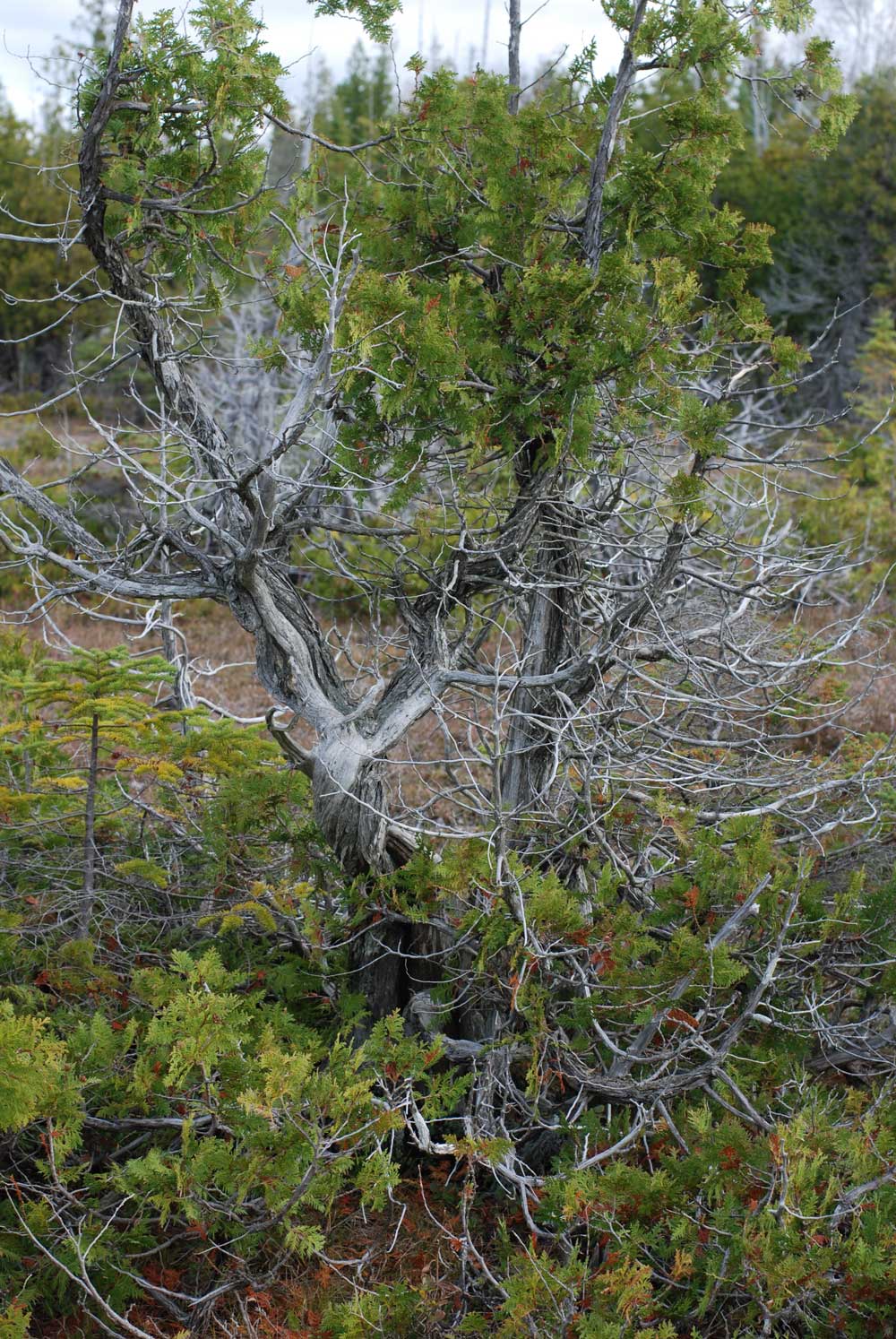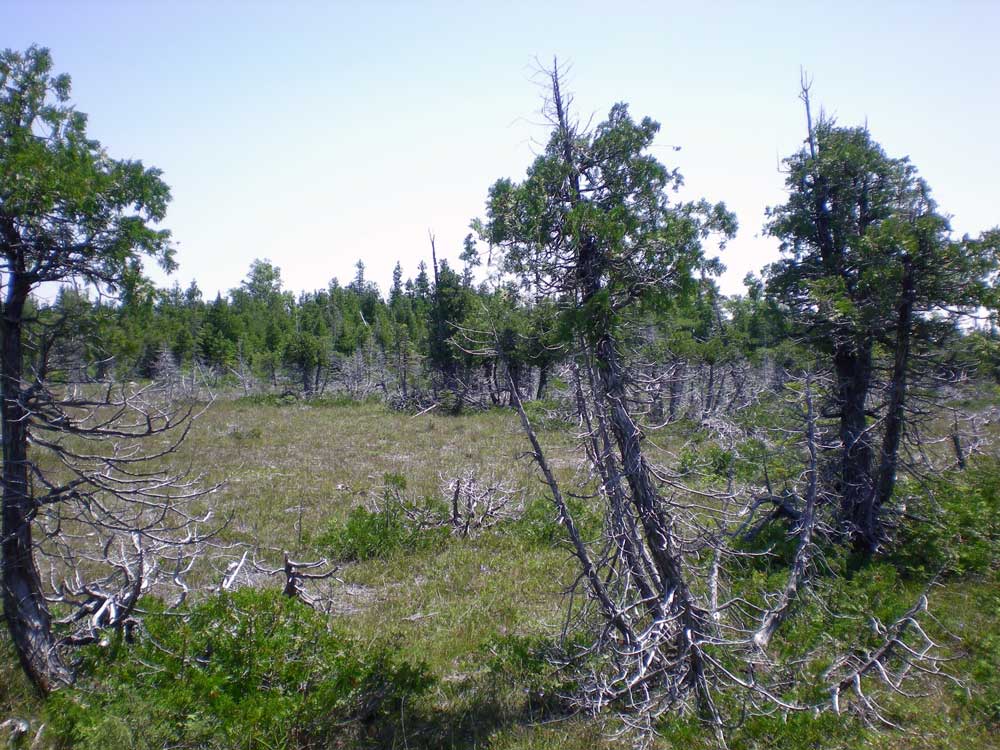Ang3lfir3
Omono
(Dan wanted to share a tree he has been working on with people ... so we posted it on the blog... you can read the entire post here)
Daniel began working on this tree the other day and wanted to share it with everyone. Thuja Occidentalis (Eastern White Cedar) is a tree that doesn't get too much play as a bonsai specimen however it has wonderful character and excellent foliage that lend themselves to bonsai culture.
Here you can see the tree before Daniel started to work on it. It had gotten a little hairy in the last few years and was ripe for an evening of work and transformation.

Before work began on the tree (picture provided by diane Robinson)
Working on the tree in the evenings as Daniel often does he completed work on the tree in a few nights. It is important to note the amount of foliage that was removed as the tree is rather vigorous and controlling the planes of the foliage is very important. Also as the trunk of the tree is the main focal point here with its gnarled undulating deadwood the foliage needs to be subordinate to the trunk to carry out the intended image.

The tree after a few evenings of work. Notice how the foliage is subordinate to the trunk (focal point).
more pictures here
questions comments always welcome .... thanks!
Daniel began working on this tree the other day and wanted to share it with everyone. Thuja Occidentalis (Eastern White Cedar) is a tree that doesn't get too much play as a bonsai specimen however it has wonderful character and excellent foliage that lend themselves to bonsai culture.
Here you can see the tree before Daniel started to work on it. It had gotten a little hairy in the last few years and was ripe for an evening of work and transformation.

Before work began on the tree (picture provided by diane Robinson)
Working on the tree in the evenings as Daniel often does he completed work on the tree in a few nights. It is important to note the amount of foliage that was removed as the tree is rather vigorous and controlling the planes of the foliage is very important. Also as the trunk of the tree is the main focal point here with its gnarled undulating deadwood the foliage needs to be subordinate to the trunk to carry out the intended image.

The tree after a few evenings of work. Notice how the foliage is subordinate to the trunk (focal point).
more pictures here
questions comments always welcome .... thanks!












